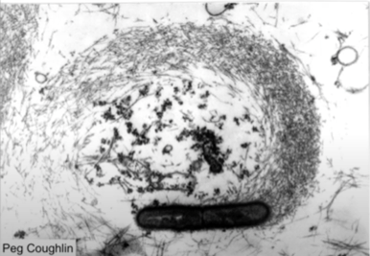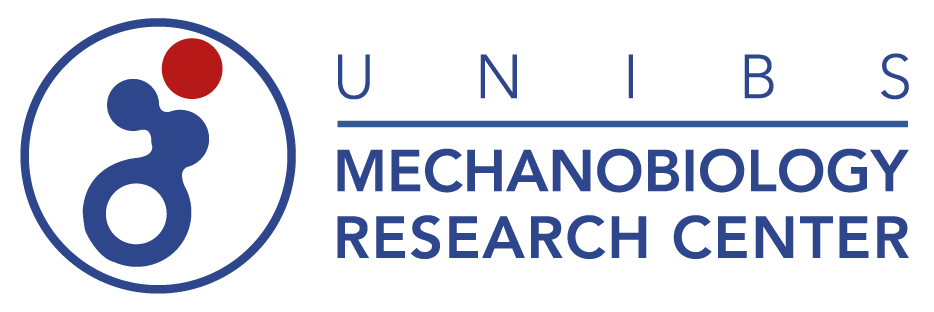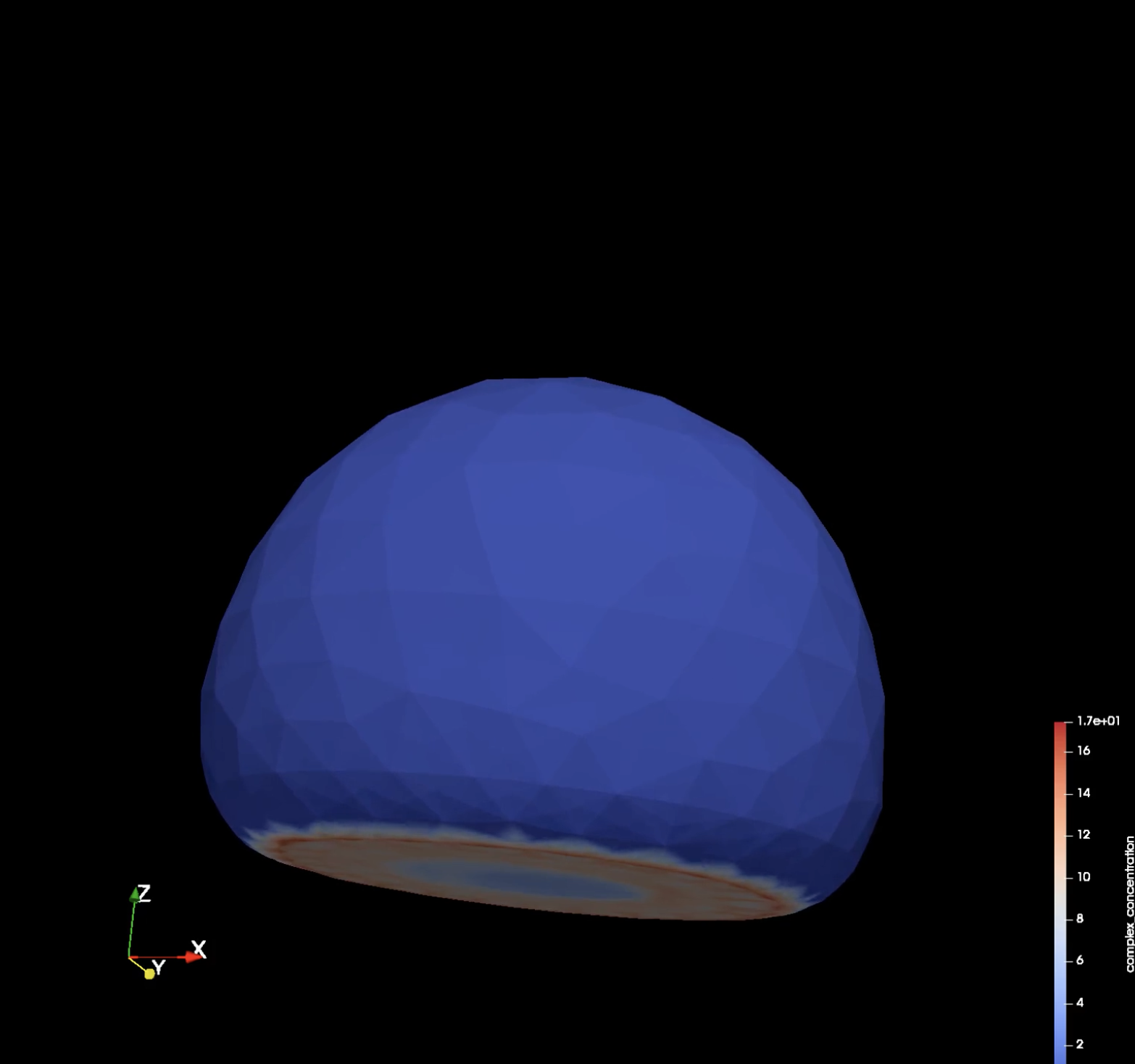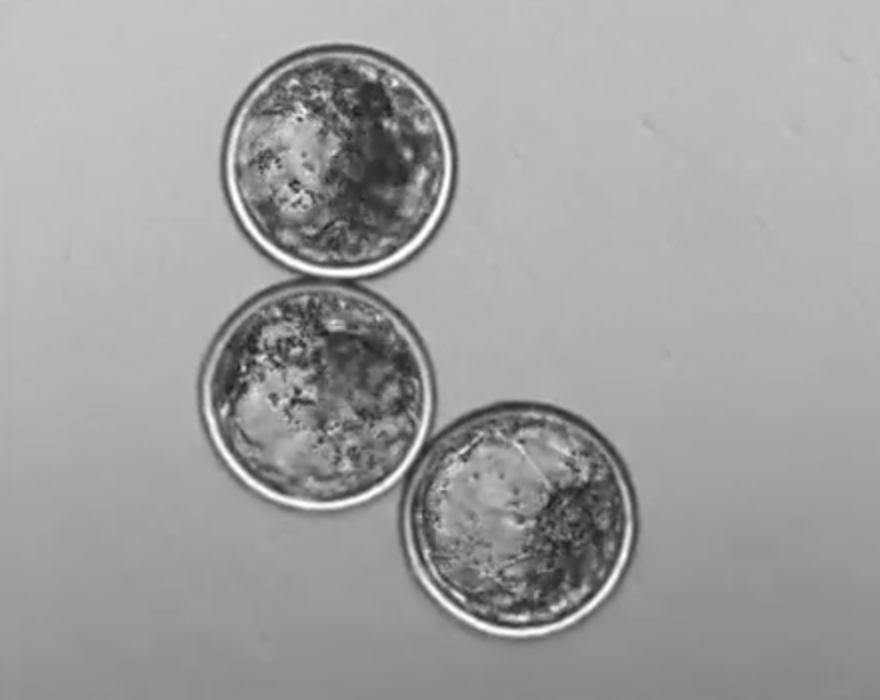PIs – A. Salvadori, C. Bonanno, M. Serpelloni
In collaboration with:
R. McMeeking, University of California at Santa Barbara, USA
M. Guo, R. Kamm, “The mechanobiology lab”, MIT, Boston, USA
Copan, Brescia, Italy

The experimental and simulated actin-based motion of a pathogen
Actin-based motility is a complex process in which the actin-polymerization motor is the primary force-generating cytoskeletal machinery. It can produce pushing (protrusive) forces through actin filaments polymerization during lamellipodia protrusion in migrating cells and it is responsible for the intracellular movement of certain pathogens in infected host cells. Based on a rigorous thermodynamic setting, we propose a multiphysics model for actin-based motility stemming from continuity equations that account for the actin chemical kinetics. Thermodynamic restrictions are identified considering a multiplicative decomposition of the deformation gradient, which is thus capable to model polymerization. Constitutive theory and chemical kinetics are defined to eventually write the governing equations for this challenging multi-physics problem. The field equations are solved numerically with the finite element method.

The experimental and simulated actin-based motion of a pathogen
As a simple proof of concept, we propose a one-dimensional model for actin-based motility of bacteria pathogens. Experimental investigations are in progress in collaboration with Copan and The mechanobiology lab at MIT, to extract real-life parameters and perform the model validation.
Our Projects
The Mechanobiology of actin-based motility
PIs - A. Salvadori, C. Bonanno, M. Serpelloni In collaboration with: R. McMeeking, University of California at Santa Barbara, USA M. Guo, R. Kamm, “The mechanobiology lab”, MIT, Boston, [...]
Against the misuse of mechanics in the mechanobiology community
PI - A. Salvadori Within Mechanobiology, the misuse of terminology and methods of mechanics is increasingly noted, especially by isolated groups of biochemists and biologists, [...]
The Mechanobiology of early Embriogenesys
PIs - A. Salvadori, M. Serpelloni, A. Luciano*, V. Lodde* * Reproductive and Developmental Biology Laboratory, University of Milan A multidisciplinary approach will tackle the [...]



